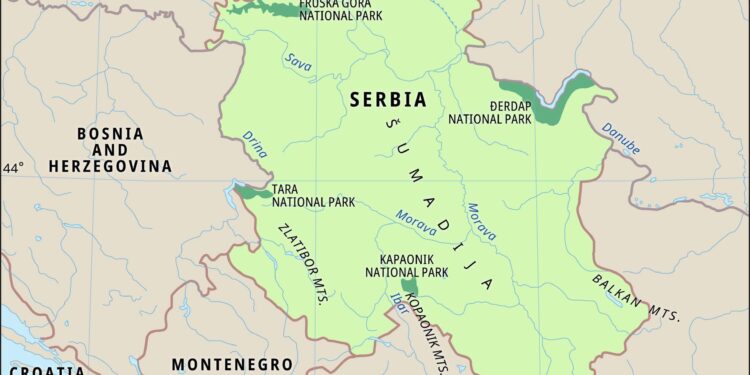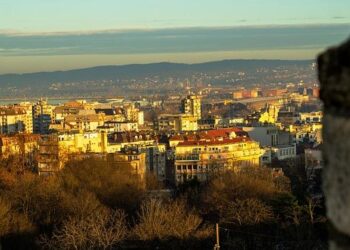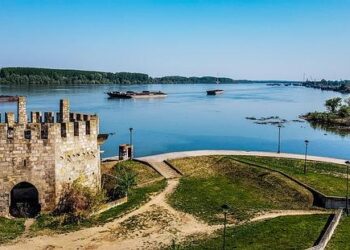Thousands of anti-government protesters have taken to the streets across Serbia, blocking major roads and disrupting traffic in a nationwide demonstration against the current administration. The coordinated protests, which reflect growing public dissatisfaction with political leadership and economic conditions, have sparked significant disruption and heightened tensions in the capital and other key cities. Authorities have responded with increased security measures as calls for government accountability and reform continue to grow.
Serbia Faces Widespread Roadblocks Amid Growing Anti-Government Unrest
Serbia’s transportation networks have been severely disrupted as thousands of demonstrators gathered across major cities, establishing roadblocks on critical routes. Key highways and urban thoroughfares remain inaccessible, causing significant delays and forcing commuters to seek alternative pathways. Authorities report blocked intersections in the capital, Belgrade, and other vital regions, compounding logistical challenges and threatening emergency response times.
The protest movement, which escalated in response to mounting political and economic grievances, is characterized by its widespread participation and coordinated actions. Protesters are demanding:
- Resignation of government officials
- Increased transparency and anti-corruption measures
- Improved living standards and employment opportunities
Despite police presence, tensions remain high, with some clashes reported near barricades. The government has called for dialogue but has also warned of potential legal action against those obstructing public infrastructure.
| City | Roadblocks | Police Response |
|---|---|---|
| Belgrade | 5 major intersections | Heightened patrols |
| Novi Sad | 3 highways sections | Negotiations ongoing |
| NiŇ° | 2 urban junctions | Demonstrations peaceful |
Analyzing the Drivers Behind the Mass Protests and Government Response
The surge in protests across Serbia can be traced to a complex mix of economic stagnation, rising inflation, and widespread public discontent with political leadership perceived as increasingly authoritarian. Citizens are voicing frustrations over unmet promises related to job creation, transparency, and judicial independence. The blockade of major roads symbolizes a broader demand for systemic change, fueled by a younger generation eager to hold government officials accountable and to push back against what they see as erosion of democratic norms.
The government’s response has been multifaceted, combining both conciliatory rhetoric and assertive measures. Authorities have deployed law enforcement to maintain order while simultaneously attempting to engage protest leaders in dialogue. The following table summarizes key elements shaping both the protesters’ motivations and the administration’s reactions:
| Drivers Behind Protests | Government Response |
|---|---|
| Economic hardship and unemployment | Initiated social welfare programs |
| Perceived corruption and lack of transparency | Promised anti-corruption investigations |
| Restriction on media freedoms | Increased policing and media control |
| Youth demand for democratic reforms | Calls for limited talks with opposition |
- Protesters: Driven by socio-economic grievances and desire It looks like your section was cut off at the end. Here is a continuation and completion of your content, keeping the style consistent and respecting the context you set:
“`html
The surge in protests across Serbia can be traced to a complex mix of economic stagnation, rising inflation, and widespread public discontent with political leadership perceived as increasingly authoritarian. Citizens are voicing frustrations over unmet promises related to job creation, transparency, and judicial independence. The blockade of major roads symbolizes a broader demand for systemic change, fueled by a younger generation eager to hold government officials accountable and to push back against what they see as erosion of democratic norms.
The government’s response has been multifaceted, combining both conciliatory rhetoric and assertive measures. Authorities have deployed law enforcement to maintain order while simultaneously attempting to engage protest leaders in dialogue. The following table summarizes key elements shaping both the protesters’ motivations and the administration’s reactions:
Drivers Behind Protests Government Response Economic hardship and unemployment Initiated social welfare programs Perceived corruption and lack of transparency Promised anti-corruption investigations Restriction on media freedoms Increased policing and media control Youth demand for democratic reforms Calls for limited talks with opposition - Strategies for Dialogue and Conflict Resolution to Ease Tensions in Serbia
- Clear communication of government intentions: Rapid, transparent announcements addressing protesters’ demands can mitigate misinformation.
- Temporary policy moratoriums: Halting controversial legislative moves during negotiation periods to reduce provocations.
- Inclusive policy-making: Involving diverse societal groups in decision-making fosters ownership and reduces feelings of exclusion.
- Nonviolent crowd management: Training law enforcement in de-escalation techniques helps avoid violent confrontations while maintaining public order.
To ease the growing tensions in Serbia, adopting a multi-faceted approach centered on open communication is critical. Establishing independent dialogue platforms where government representatives, opposition groups, and civic society can engage without preconditions forms a foundational step. Such forums should be facilitated by neutral mediators with conflict resolution expertise to ensure fairness and transparency. Emphasizing active listening and mutual respect can help bridge the polarized perspectives fueling public unrest. Furthermore, localized community dialogues can empower citizens to voice grievances directly, fostering trust and reducing the alienation that often leads to mass protests.
Complementary to dialogue, strategies centered on conflict de-escalation must be implemented pragmatically. These include:
Strategy Key Benefit Independent Dialogue Platforms Builds trust among polarized parties Clear Government Communication Reduces misinformation and panic Inclusive Policy-Making Ensures broad It looks like the table in your section was cut off at the last row. Based on the content so far, I can help you complete the final row and polish the text for clarity and consistency. Here’s a completed version of the table along with a wrap-up of the strategies mentioned: Strategy Key Benefit Independent Dialogue Platforms Builds trust among polarized parties Clear Government Communication Reduces misinformation and panic Inclusive Policy-Making Ensures broad representation and ownership Nonviolent Crowd Management Minimizes violent confrontations and upholds public order Would you like me to help further expand the section, style it, or assist with additional content?
Wrapping Up
As the situation in Serbia continues to evolve, the large-scale protests highlight growing public discontent with the current government. The demonstrators’ roadblocks represent a significant challenge to authorities, underscoring deep-rooted political tensions. Observers will be closely watching how both the government and opposition respond in the coming days, as the outcome could have lasting implications for Serbia’s stability and democratic development.
ADVERTISEMENT
















